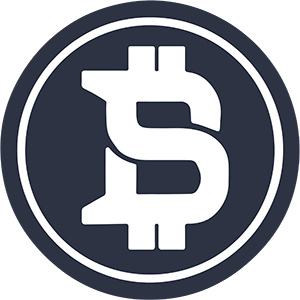USCoin: Has The ‘Stablecoin Moment’ Arrived?
9 min read
Summary The GENIUS Act provides regulatory clarity, paving the way for innovation in financial infrastructure and stablecoin adoption. Circle Internet, as the issuer of USDC, stands to benefit significantly due to its compliance track record and market trust. Coinbase may benefit even more, leveraging its control over the Base blockchain and stablecoin transaction rails for revenue less sensitive to interest rates. The legislation could negatively impact traditional and decentralized finance players who lack regulatory compliance or efficient payment solutions. All of this is likely still a ways away, as USDC is primarily used in DeFi protocols rather than for peer-to-peer transactions in noncustodial and non-contract wallets. With the passing of the GENIUS Act by the United States Senate, the pathway to meaningful innovation in financial infrastructure is becoming a bit more clear from a regulatory standpoint. In this article, we’ll briefly go over what the bill does, why Circle Internet Group’s ( CRCL ) US Dollar-backed stablecoin USCoin ( USDC-USD ) is already well positioned to benefit, and I’ll get into why I believe the stablecoin-fueled disruption of traditional payment processors isn’t as close as it might seem. The GENIUS Act With a 68-30 bipartisan vote, the United States Senate passed the GENIUS Act in mid-June. The bill now heads to the US House of Representatives. If passed by the House, it would require just a signature from President Trump to become law. This is something Trump certainly supports as he has already put pressure on the House to pass the bill by August and Trump-connected World Liberty Financial (WLFI-USD) has launched a stablecoin already. If signed into law, GENIUS would establish a regulatory framework for dollar-backed stablecoin issuers. Some of those key considerations are as follows: Stablecoins must be fully backed 1:1 by cash reserves or T-bills Annual audits for issuers with over $50 billion in market capitalization (at present, there are two that would qualify) Issuers must practice KYC compliance and have the ability to freeze/seize assets at the discretion of regulators That last one might seem to be a major hurdle for stablecoin issuers, due the reputation cryptocurrencies have as being primarily used for illicit activities. But both Circle and Tether ( USDT-USD ) issuer Tether Limited Inc have historically banned addresses when prompted to. They can do this through freezing of assets via control of the coins’ smart contracts on the blockchain. In fact, there are more than 2,000 banned USDT addresses already and roughly 300 banned USDC addresses. Stablecoin Banned Addresses (Dune Analytics/KARTOD) It’s important to note that the GENIUS Act isn’t necessarily a guarantee to getting through the House. The House Financial Services Committee has a completely separate stablecoin bill called the STABLE Act that has different language regarding foreign issuers – which would be more pertinent to Tether. Regardless of which Act eventually makes it through to the President’s desk, USDC should benefit as the biggest stablecoin with an issuer who is domestic to the United States. Good for Circle, Maybe Better for Coinbase Following what has already been an absolutely stellar performance since an early-June IPO, Circle Internet is a clear public market winner here as the issuer of one of the top stablecoins by market capitalization as well as the top US-based stablecoin. I’d encourage those who have not yet read my recent CRCL article to check out that piece as well. Provided T-bill rates remain attractive, Circle will likely be a beneficiary of the GENIUS Act, in part, due to its history of compliance and trust with the market. However, Coinbase ( COIN ) may be in an even better position, given it controls some of the rails where USDC moves. I won’t re-write my criminally under-read Coinbase piece from early-April, but given Coinbase’s control of the sequencer on the Base blockchain network, the company generates revenue from stablecoin usage that isn’t subject to the interest rate moves that Circle would be at the mercy of. With the recent release of Coinbase Payments , Coinbase has built a front-end interface that can directly compete with online payments providers like Stripe and PayPal ( PYPL ), small business POS operators like Block, Inc. ( XYZ ) or Clover ( FI ), as well as more traditional processors Visa ( V ) and Mastercard (MA). I’ll get into this a bit more in a later section. Where Circle’s earnings are at the mercy of T-bill rates and token supply, Coinbase can generate revenue on the actual usage of the tokens. Thus, even if the supply of USDC stays stagnant, increased velocity of those tokens generates incremental returns in fees for Coinbase provided the assets move through Coinbase Payments and/or Base directly through a more P2P function. Important USDC Metrics Base has been an important driver of the coin’s adoption and usage. At roughly $61 billion in stablecoin supply, USDC is the second-largest stablecoin in the market and has a 25% share of total market supply. While this is undoubtedly impressive and makes the token the biggest stablecoin by a US-based issuer (by far), USDC is well behind Tether’s $157 billion market cap. Supply is just one consideration; however, transaction volume is also important. Transaction Volume By Coin (Aretemis) At $2.3 trillion in transaction volume during the month of May, USDC was the most used stablecoin in the market by a fairly large margin. USDC had 57% of transaction volume market share in May, and that metric has been higher than 50% every month since October of last year. However, it’s important to be aware that most of this transaction volume is from centralized exchanges rather than true ‘peer to peer’ wallet activity. We can see the degree to which this is the case through USDC’s % of transaction volume from P2P wallets – or non-contract wallets: Top 3 May All Volume P2P Filtered % from P2P USDT $1,400 $814 $1,000 58.14% USDC $2,300 $353 $967 15.35% DAI $264 $2 $65 0.87% Source: Artemis, $ in billions In the table above, ‘filtered’ volume takes out centralized exchange volume. Stripping that out, USDC transaction volume in May was closer to $1 trillion than $2 trillion, and most of that was with a single DeFi protocol. A big driver of USDC activity on Base is the emergence of the decentralized exchange (or DEX) Aerodrome ( AERO-USD ). Even though Aerodrome is a DEX that is exclusive to the Base blockchain, it has accounted for over $516 billion in USDC transaction volume over the last 30 days: Stablecoin Applications (Artemis) This level of activity from just one platform helped make Base the second-largest mover of stablecoins by transaction volume in May, after only Ethereum ( ETH-USD ). While well below the monstrous three-figure APY numbers from Q1-24, the yield offered by providing liquidity to Aerodrome’s USD pools is still significantly higher than the yields provided by the T-bill collateral underlying the USDC assets themselves. USDC Pools on Base (exponential.fi) Wherever there is a presence of these kinds of yields, there is an element of risk involved. But I share this example because I think it’s important to highlight how USDC is being used. At least today, USDC is more of a DeFi instrument for lending and generating yields through providing DEX liquidity rather than for P2P payments at a significant scale. But a key consideration for Base and many other networks with USDC minted is that the median price to transact on these networks is often a fraction of a penny. Meaning, if a merchant wanted to accept a customer payment facilitated with USDC, that merchant can do so without requiring any intermediary other than the blockchain network utilized for the transaction. This is the biggest reason why stablecoins are viewed as a potential Visa/Mastercard killer. Stablecoins Could Cannibalize Visa/Mastercard From my early-April Coinbase article that I mentioned previously in this note: Processing Savings (AcceptUSDC) Consider what a small business that generates $10 million in annualized sales could save by eliminating credit card processing fees. The example above shows over $16,600 in monthly savings for a company that does half its sales with credit cards. This is important because it is an attack on the lifeblood of companies like Square and Clover – but also Visa and Mastercard; each of which generate their revenue from credit and debit card solutions. None of this should be a major surprise. I’ve been writing about the impact that cheap, fast blockchain networks can ultimately have on Visa and Mastercard at least as far back as 2022 . In a detailed piece covering Bitcoin’s ( BTC-USD ) Lightning Network from September of that year, I wrote the following: It is undeniably cheaper for the goods and services seller to use Lightning for payments rather than credit cards. We’re already seeing top US retailers supporting a bipartisan bill aimed at lowering credit card transaction fees. The market demand for alternatives appears to be there. The question is, will that demand find its way to Bitcoin’s Lightning Network? Nearly three years later, Lightning Network growth has been a massive dud, while dollar-denominated stablecoin supply has nearly doubled from roughly $150 billion. And as Nic Carter of Castle Island Ventures calculates it, stablecoin transfer volume is already ahead of both Visa and PayPal on a 30-day rolling average. Stablecoins vs TradFi (Artemis) However, what I find very interesting about these numbers is that the emergence of stablecoin volume hasn’t made a dent in Visa or PayPal’s activity. In fact, each of these entities are processing more monthly transactions than they were five years ago. So while stablecoins have seen major growth in supply, usage, and perhaps soon regulatory clarity; it has yet to come at the expense of major processors. And there may be good reasons for that. Visa and Mastercard Have Their Benefits To be clear, I do anticipate that stablecoins and the blockchain networks where they live will eventually erode the profitability of the traditional payment processor business. I suspect transaction fees will ultimately become a race to the bottom for dollar-denominated activity online. But I think we’re probably further away from that than most crypto advocates might realize. For now, there are benefits to using credit cards that I don’t think consumers will be willing to give up easily. First, rewards cards can be an effective way to minimize costs, especially if they’re fully cash-back on all purchases. Second, credit cards provide a level of privacy that public blockchains simply don’t have. As transparent blockchains, all one needs to know is what someone’s wallet address is to see what they’re spending stablecoins on through Base or Solana. Furthermore, once a merchant/customer transaction has taken place on public stablecoin rails, the merchant can then see everything else the customer has done with that same address. While this might be fine for smaller purchases at restaurants or coffee shops, stablecoins will likely need to have some sort of zero-knowledge proof capability before significant business can take place on-chain. Closing Takeaways With Congress one step closer to a real regulatory framework for stablecoins in the United States after the Senate’s passing of the GENIUS Act, the market is already beginning to see a change in payments in the future. To be sure, Visa and Mastercard would likely not be immune from challenges if there is meaningful growth in payments with blockchain-based stablecoins like USDC. To this point, we have yet to see such growth, despite significant growth in stablecoins supply and DeFi usage in recent years. But there’s a big difference in using USDC to plow it into Aerodrome liquidity pools and using it to buy jeans. I do think the latter will eventually happen, but it’s going to take more than just the passing of the GENIUS bill to get that done. Blockchain networks that facilitate stablecoins payments likely need to have some element of privacy to be used at scale. The end-user experience likely needs to improve as well. Ideally, blockchain rails would be obfuscated away entirely through a front-end interface that looks and feels like Cash App or Venmo. The future is likely bright for stables, but as far as I can tell, we’re far from there yet.

Source: Seeking Alpha



